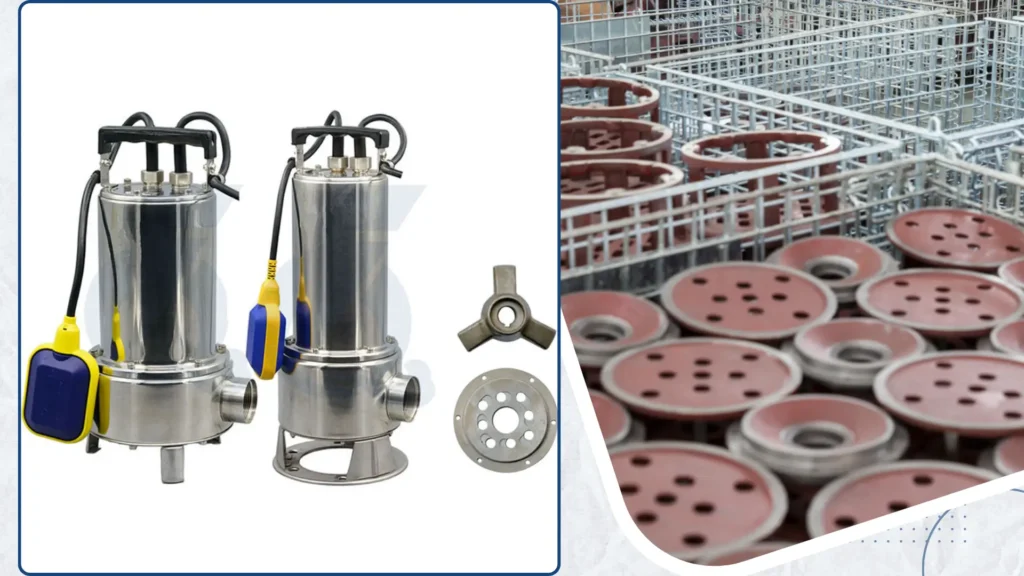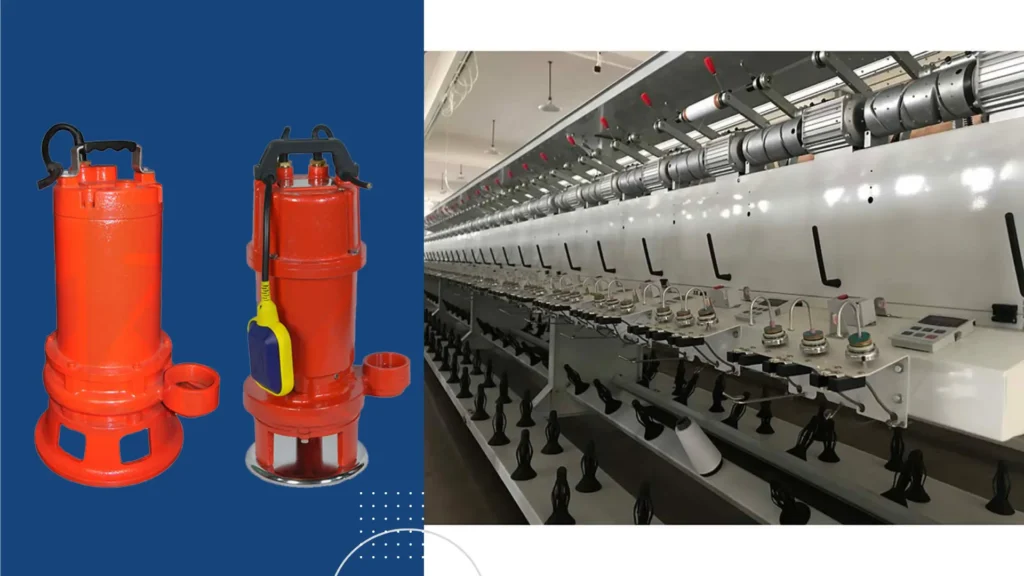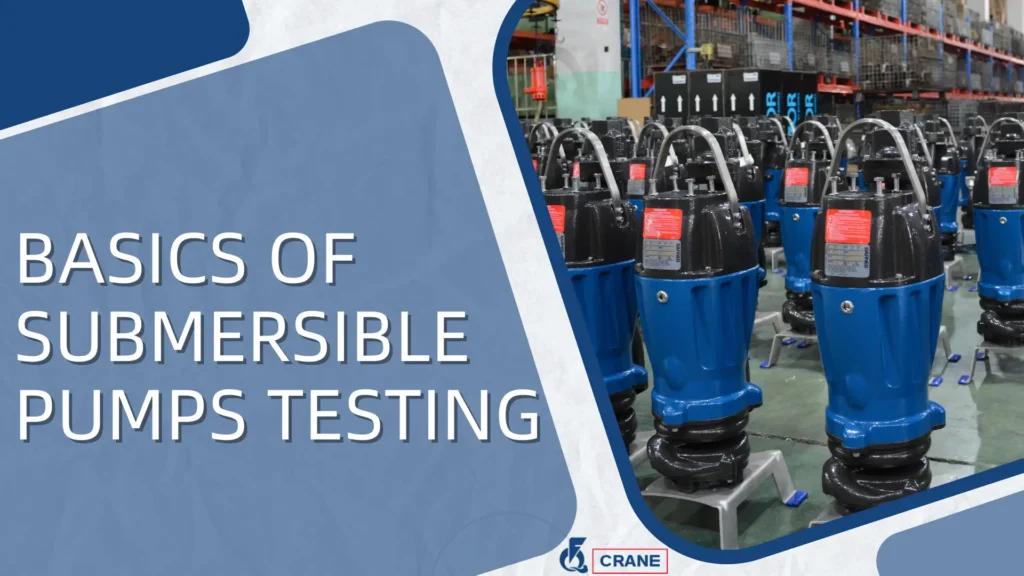Submersible pumps are essential tools used in various applications, such as irrigation, wastewater management, and even in residential areas to keep basements dry.
However, with many options available, it’s crucial to ascertain the reliability and longevity of a pump.
This guide will delve into the rigorous testing processes manufacturers implement to ensure their pumps are durable, efficient, and safe. Understanding these tests will assist you in making an informed choice.
Why Is Submersible Pump Testing Important?
Ensures Long-Term Performance
While a submersible pump may function correctly at the outset, its ability to perform over extended periods is vital.
Testing replicates long-term operational conditions, allowing manufacturers to assess how well components—such as motors, seals, and mechanical parts—will hold up over time.
This predictive analysis can indicate potential future issues and enable manufacturers to reinforce weak points in the pump’s design, ultimately leading to fewer breakdowns and a more extended service life for the end-user.

Prevents Costly Failures
Failures in critical equipment, like pumps, can lead to significant financial losses, especially during emergency situations, such as flooding or industrial processes.
By identifying vulnerabilities—such as weak impellers or defective seals—before they lead to actual failure, rigorous testing can prevent malfunctions that might result in costly repairs or operational downtimes.
Over time, investing in a tested and reliable pump translates to lower overall maintenance costs and greater peace of mind.
Guarantees Safety
Given the inherent risks of combining electricity and water, ensuring safety in submersible pump design is paramount.
Through rigorous testing, manufacturers confirm that all aspects of the pump—including waterproofing, grounding, and insulation—meet established safety standards.
This process helps mitigate risks of electrical shocks, leaks, and even fire hazards, ensuring safe operation for users.
Also Read:
- How to Test a Submersible Pump?
- Steps for Maintaining Submersible Pumps Efficiently
- Choosing the Right Submersible Pump for Waterworks
What Are the Common Tests for Submersible Pumps?
Performance Testing
Submersible pumps undergo performance testing in which they are evaluated at various speeds and pressures.
This assessment measures key metrics such as the flow rate (the volume of water moved) and the head (the height to which water can be lifted).
The results are then compared against the manufacturer’s specified capabilities to verify the pump’s real-world performance.
Such tests ensure that customers are not misled by theoretical specifications, guaranteeing that the pump can perform effectively in actual conditions.
Durability Testing
To simulate years of usage, manufacturers conduct “marathon runs” on pumps, often exceeding 1,000 hours of continuous operation.
This intensive testing reveals potential problems like overheating, bearing wear, or corrosion that may not appear in shorter experiments.
By identifying these issues early, manufacturers can make necessary adjustments, thereby improving the pump’s overall longevity.

Leak and Seal Testing
Even a minor leak can compromise a submersible pump’s motor, leading to catastrophic failures.
For this reason, seals undergo rigorous pressurization tests to ensure their integrity.
Additionally, some tests immerse pumps at extreme depths to observe how seals perform under significant water pressure.
This testing ensures that seals are capable of withstanding various operational conditions without failing.
Electrical Safety Testing
Electrical safety is paramount for any device operating in or near water.
Using high-voltage probes, technicians test the pump’s electrical components to ensure that electricity remains contained within the wiring and does not leak into the water.
This testing is critical for preventing short circuits and reducing the risks of electrocution, especially in safety-sensitive environments.
How Is Flow Rate Measured in Submersible Pumps?
Controlled Flow Conditions
To determine flow rates accurately, tests are conducted in tanks equipped with precise water levels and pressure gauges.
By manipulating various flow control valves, engineers can measure how flow rates fluctuate under differing workload situations—such as pumping water uphill compared to moving it horizontally.
This controlled environment ensures high accuracy in testing.
Comparison with Manufacturer Claims
Manufacturers may advertise specific flow rates, such as “10 gallons per minute.”
The testing process is designed to confirm if the pump can consistently deliver that flow rate in practical applications.
This verification is crucial, as it ensures that consumers receive what they are promised rather than inflated figures based on idealized scenarios.

Impact of Depth and Pressure
The pressure exerted by water increases with depth, which can influence the performance of submersible pumps.
Tests that simulate various depths—such as 50 feet versus 200 feet—reveal how these conditions affect flow rates and energy consumption.
Understanding these implications allows manufacturers to optimize their pumps for specific applications.
What Determines a Pump’s Energy Efficiency?
Motor Power Consumption
An energy-efficient pump effectively delivers water flow without excessive electricity consumption.
During testing, the input power (measured in watts) is compared to the output (the volume of water moved).
The closer these two values are, the better the pump’s energy efficiency, which can lead to significant savings on electricity bills for users.
Hydraulic Efficiency
Hydraulic efficiency evaluates how effectively a pump’s design translates motor power into water movement.
Factors like friction, turbulence, or poorly designed impellers can waste energy, leading to increased operational costs.
Evaluation of hydraulic efficiency during testing helps identify and rectify design flaws, ensuring that pumps convert as much motor power as possible into usable energy for moving water.
Industry Standards and Certifications
Manufacturers often seek to earn labels like ENERGY STAR or EUROPEAN CE, which signify compliance with stringent efficiency benchmarks.
These certifications not only serve as indicators of a pump’s energy efficiency but also assure consumers that the product meets high-quality and environmental standards.
Checking for these certifications can lead to cost savings and more sustainable choices over the lifetime of the pump.

How Do Manufacturers Test for Durability?
Accelerated Wear Testing
To predict a pump’s longevity, manufacturers often conduct accelerated wear tests.
Instead of waiting years to observe wear, manufacturers run pumps continuously for weeks under high-stress and challenging conditions—such as pumping abrasive, gritty water.
This process helps to reveal weaknesses in components like bearings or shafts much sooner, allowing for improvements in design before the product is released to the market.
Corrosion Resistance Checks
Corrosion presents a significant risk for submersible pumps, especially in environments where they may come into contact with saltwater or harsh chemicals.
During corrosion resistance testing, manufacturers expose various materials to aggressive fluids to assess how well they resist corrosion over time.
By ensuring that pumps are resistant to rust and degradation, manufacturers can enhance their reliability and lifespan.
Vibration and Stress Tests
Submersible pumps often endure rough handling during transportation and installation, which can lead to physical wear.
To account for this, manufacturers perform vibration and stress tests where pumps are subjected to shaking, jolting, and rapid starts and stops.
These simulated conditions help identify structural weaknesses that could affect the pump’s durability in real-world scenarios.
What Role Does Waterproofing Play in Testing?
IP (Ingress Protection) Ratings
IP ratings, such as IP68, indicate a pump’s ability to withstand submersion in water for prolonged periods without suffering leakage.
Lower ratings, like IP54, suggest some level of resistance to water but may not be suitable for complete submersion.
Understanding these ratings is essential for selecting a pump that will perform reliably in the intended application, whether it be outdoor use or total immersion.
Seal Integrity Checks
During testing, special dyes or air pressure tests are employed to detect microscopic cracks or flaws in seals that could allow water to penetrate the motor over time.
This preventative measure helps to ensure that pumps maintain their integrity and functionality, thereby safeguarding against premature failure.

Long-Term Submersion Trials
To affirm that no moisture penetrates critical components, pumps are subjected to long-term submersion trials.
In these tests, pumps may be left underwater for months, ensuring their design and construction are robust enough to maintain operational standards without degradation in wet environments.
How Are Electrical Components Safeguarded?
Insulation Resistance Tests
Proper insulation is essential for preventing electrical failures.
Using a megohmmeter, manufacturers test to see if electricity could leak through outdated or worn insulation.
This test identifies potential risks for short circuits and ensures that the electrical components remain safe for operation, contributing to the overall reliability of the pump.
Grounding and Overload Protection
For safety, submersible pumps are equipped with features like grounding and thermal cutoffs.
Testing verifies these safety components function correctly, ensuring that the pump will shut down before overheating occurs, thus preventing potentially hazardous situations.
Waterproof Cable Testing
Pump connectors and wiring are also tested for their ability to withstand water intrusion.
This involves submerging wiring in water and bending or pulling it to ensure that no moisture seeps in over time.
This testing is critical because compromised electrical connections can lead to failures and safety hazards in operation.
Should You Trust Third-Party Testing?
Independent Verification
Manufacturers may be tempted to present their products in the best light, leading to a potential bias in self-conducted tests.
Third-party testers, such as UL, TÜV, or NSF, provide unbiased evaluations that lend credibility to the performance and safety claims made by manufacturers.
Trusting independent validation helps consumers make informed decisions based on reliable information.
Compliance with Global Standards
Certifications such as ISO 9001 or ANSI/NSF-61 signify that a pump meets international quality and safety standards, particularly in applications involving drinking water.
These certifications instill confidence in the product’s integrity and safety, ensuring it adheres to established regulations that govern public safety.
Transparency in Results
Reputable testing organizations publish complete reports online which detail the results of various evaluations, including failure rates, efficiency, and lifespan across different brands.
This transparency allows consumers to make direct comparisons, enhancing the decision-making process when selecting a submersible pump.

Conclusion
Investing in a submersible pump is a long-term commitment that necessitates careful consideration and due diligence.
It is essential to prioritize purchasing models that have undergone comprehensive testing and carry third-party certifications, as these ensure that the pump meets high standards of reliability, efficiency, and safety.
Users should look for clear performance data that illustrates how the pump will perform in real-world conditions, as well as robust waterproofing ratings that indicate its ability to withstand harsh environments.
When considering a submersible pump for your home, farm, or factory, it’s critical to prioritize those models that have demonstrably passed rigorous testing protocols.
Understanding the importance of these tests and what they reveal about a pump’s durability and reliability can prevent costly problems down the line.
Whether you need a pump for irrigation, drainage, or industrial applications, a thoroughly vetted and tested pump is key to ensuring consistent performance and longevity.

